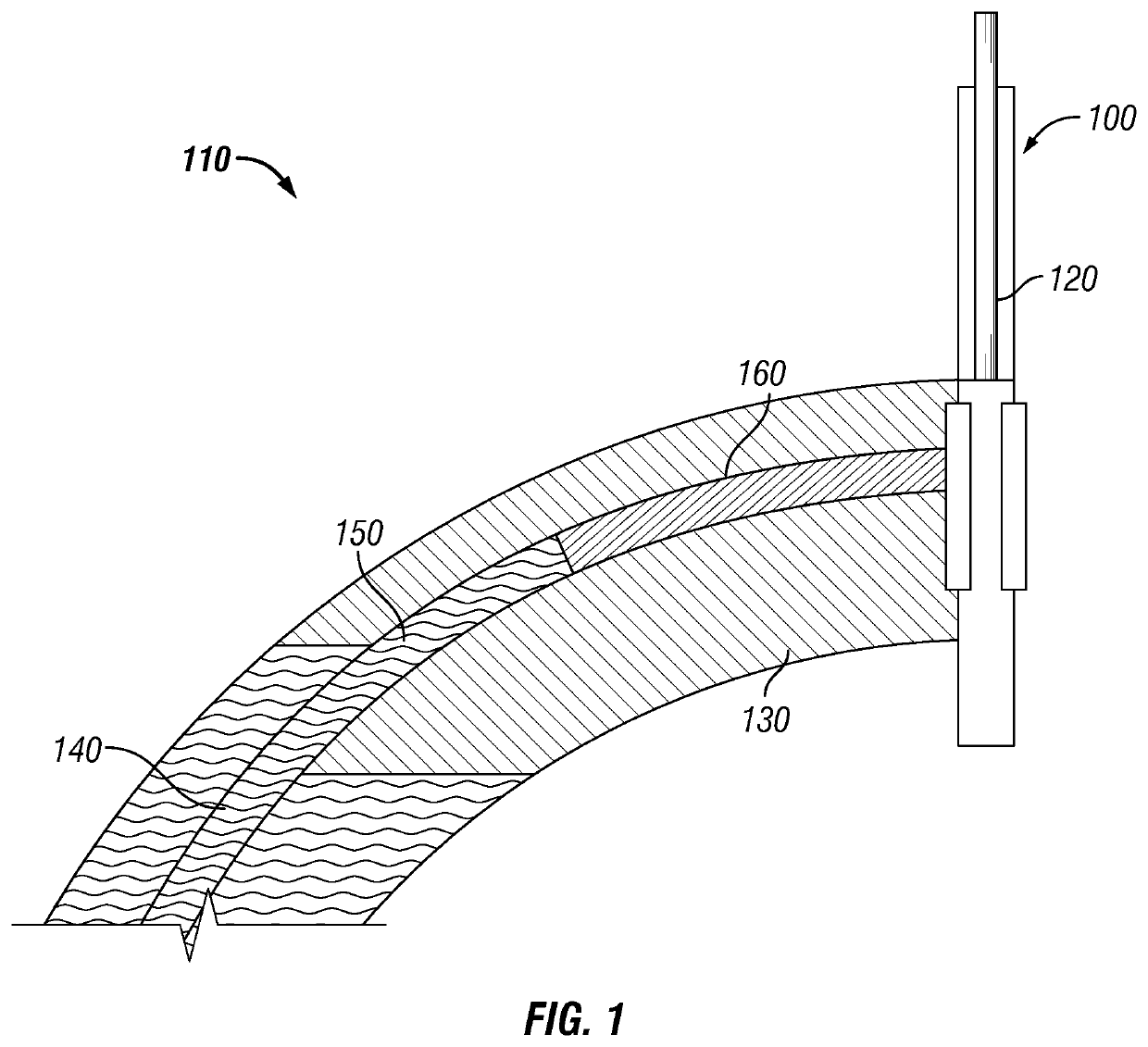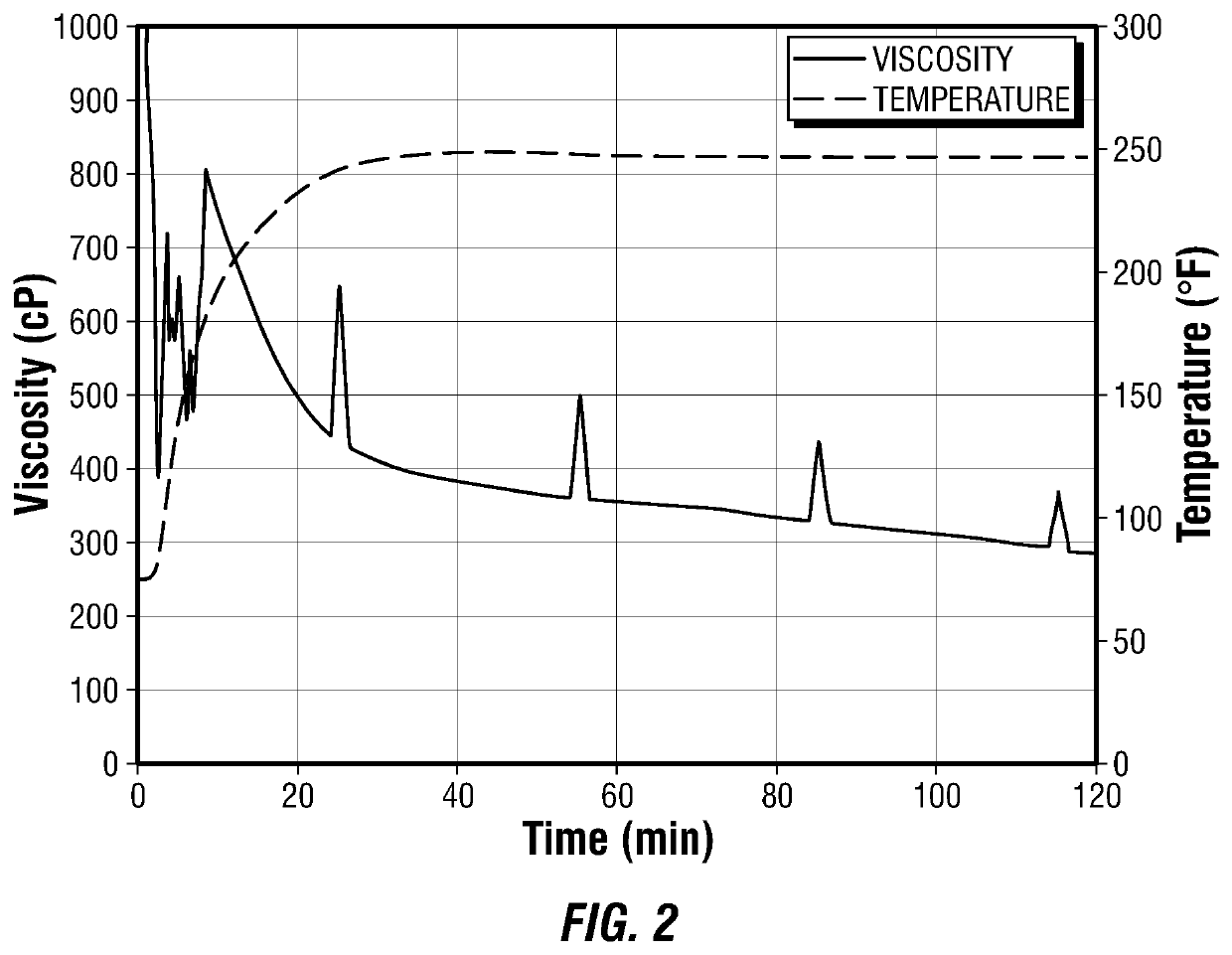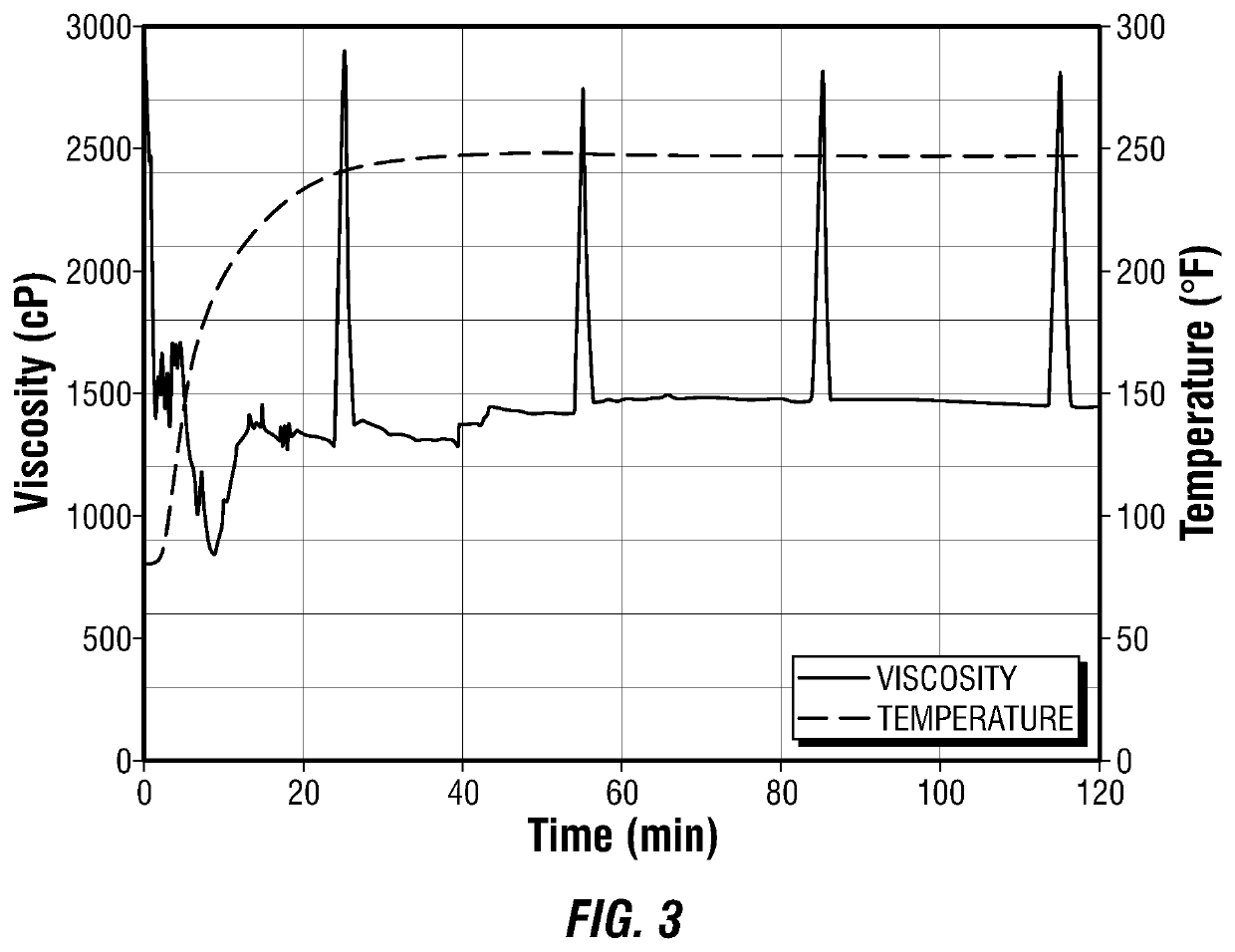Methods and compositions for mitigating water production
a technology of compositions and water, applied in the field of hydrocarbon recovery, can solve the problems of affecting the environment, affecting the separation and disposition of produced water, and often producing water (or aqueous fluid) from oil and gas wells as non-desirable, so as to delay the breaking of viscosity and increase the viscosity of the treatment fluid composition
- Summary
- Abstract
- Description
- Claims
- Application Information
AI Technical Summary
Benefits of technology
Problems solved by technology
Method used
Image
Examples
example 1
[0075]In one example embodiment, the treatment fluid composition was prepared with 100 to 500 milliliters (ml) of mineral oil (M5049 by Finoric, Houston, Tex.) having a flash point of greater than 210° F. mixed with 8 gallons per thousand gallons (gpt) of a phosphate ester-based gelling agent (ECONO OG-1 by Economy Polymers and Chemicals, Houston, Tex.), and 8 gpt of an iron-based crosslinking agent (ECONO OG-XL by Economy Polymers and Chemicals, Houston, Tex.). After mixing, the treatment fluid composition was heated to 250° F. Viscosity was measured using a viscometer (M5600 HPHT Rheometer by Grace Instrument Company, Houston, Tex.).
[0076]As shown in FIG. 2, the viscosity of the crosslinked treatment fluid composition was maintained greater than about 300 centipoise (cP) for at least 100 minutes at a shear rate of 100 s−1.
example 2
[0077]In one example embodiment, the treatment fluid composition was prepared with 100 to 500 ml of mineral oil (M5049 by Finoric, Houston, Tex.) having a flash point of greater than 210° F. mixed with 16 gpt of the phosphate ester-based gelling agent (ECONO OG-1 by Economy Polymers and Chemicals, Houston, Tex.), and 16 gpt of the iron-based crosslinking agent (ECONO OG-XL by Economy Polymers and Chemicals, Houston, Tex.). After mixing, the treatment fluid composition was heated to 250° F. Viscosity was measured using a viscometer (M5600 HPHT Rheometer by Grace Instrument Company, Houston, Tex.).
[0078]As shown in FIG. 3, the viscosity of the crosslinked treatment fluid composition was maintained greater than about 1,400 cP for at least 120 minutes at a shear rate of 100 s−1.
[0079]Examples 1 and 2 suggest that the viscosity of the treatment fluid composition can be adjusted by altering the quantities of the gelling agent and the crosslinking agent.
example 3
[0080]In one example embodiment, the treatment fluid composition was prepared with 100 to 500 ml of mineral oil (M5049 by Finoric, Houston, Tex.) having a flash point of greater than 210° F. mixed with 16 gpt of the phosphate ester-based gelling agent (ECONO OG-1 by Economy Polymers and Chemicals, Houston, Tex.) and 16 gpt of an iron-based crosslinking agent (ECONO OG-XL by Economy Polymers and Chemicals, Houston, Tex.). After mixing at room temperature, a firm gel was formed. Subsequently, about 10 ml of the firm gel was mechanically sheared in the presence of 100 ml of mineral oil.
[0081]Example 3 suggests that the crosslinked treatment fluid composition can be removed by a shearing force in a hydrophobic environment. The shearing force can be provided for example by applying positive hydraulic pressure into the wellbore. The shearing force may cause physical erosion to the crosslinked treatment fluid composition positioned in a high permeability streak adjacent to the wellbore, su...
PUM
| Property | Measurement | Unit |
|---|---|---|
| flash point | aaaaa | aaaaa |
| viscosity | aaaaa | aaaaa |
| viscosity | aaaaa | aaaaa |
Abstract
Description
Claims
Application Information
 Login to View More
Login to View More - R&D
- Intellectual Property
- Life Sciences
- Materials
- Tech Scout
- Unparalleled Data Quality
- Higher Quality Content
- 60% Fewer Hallucinations
Browse by: Latest US Patents, China's latest patents, Technical Efficacy Thesaurus, Application Domain, Technology Topic, Popular Technical Reports.
© 2025 PatSnap. All rights reserved.Legal|Privacy policy|Modern Slavery Act Transparency Statement|Sitemap|About US| Contact US: help@patsnap.com



